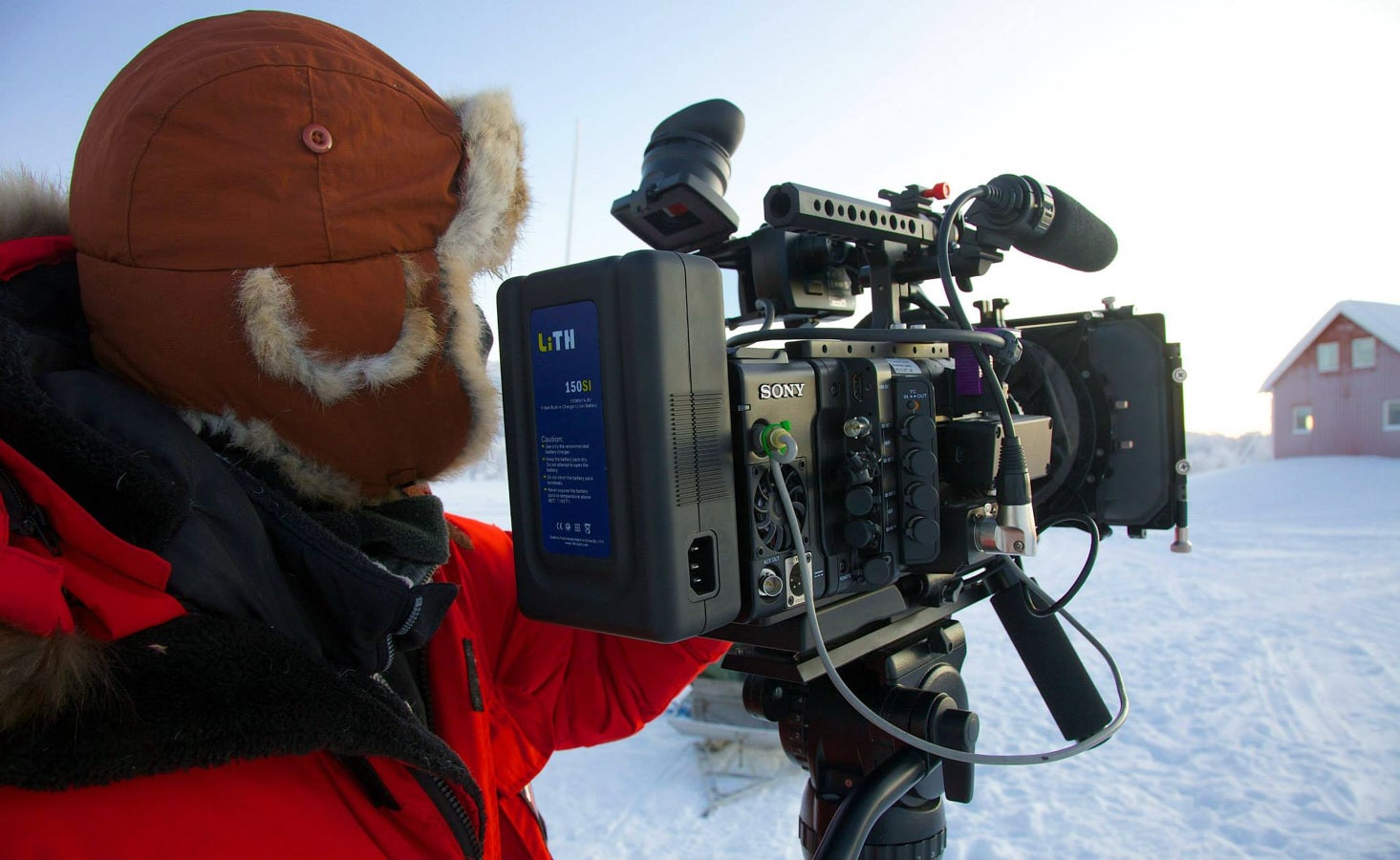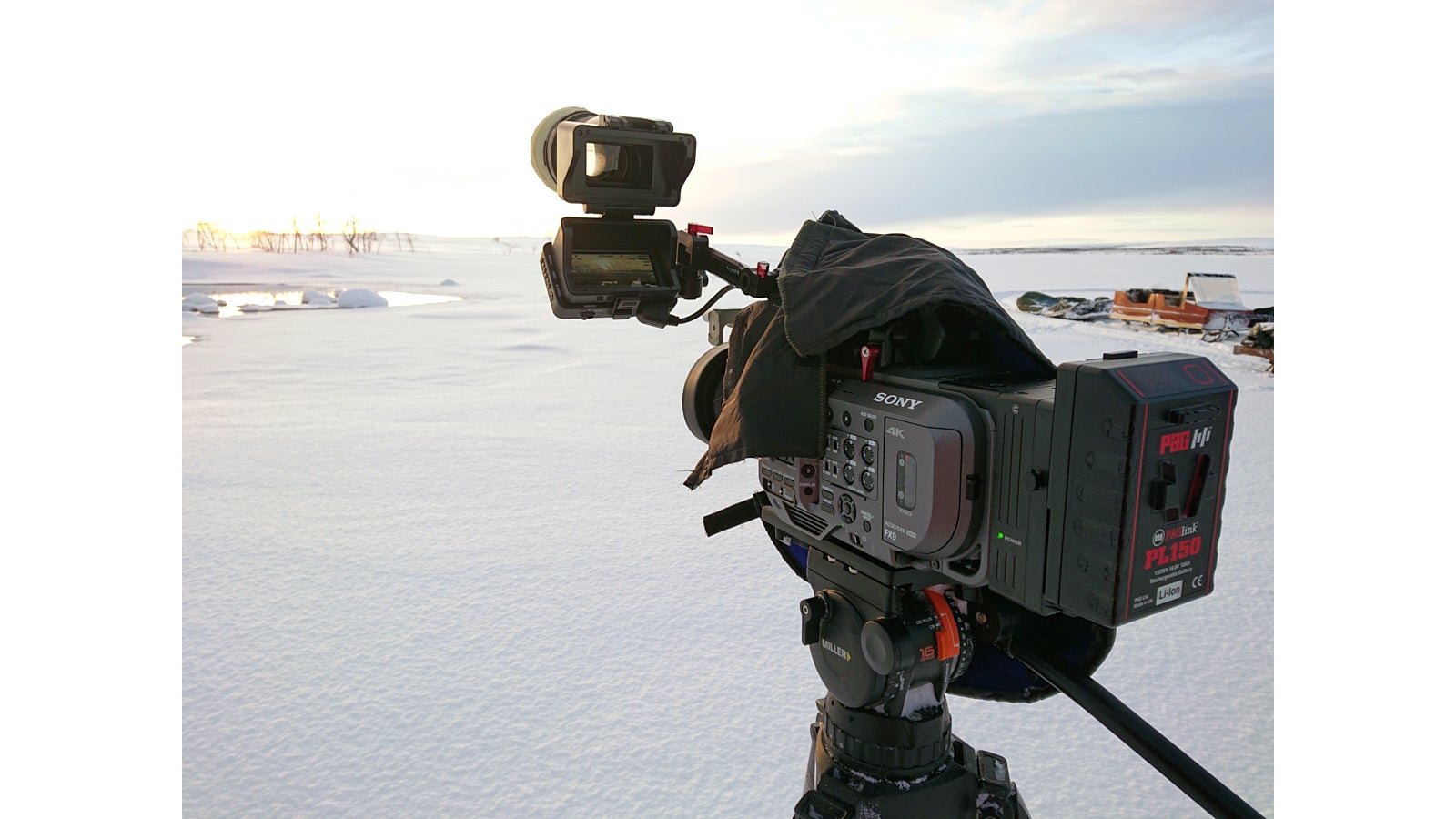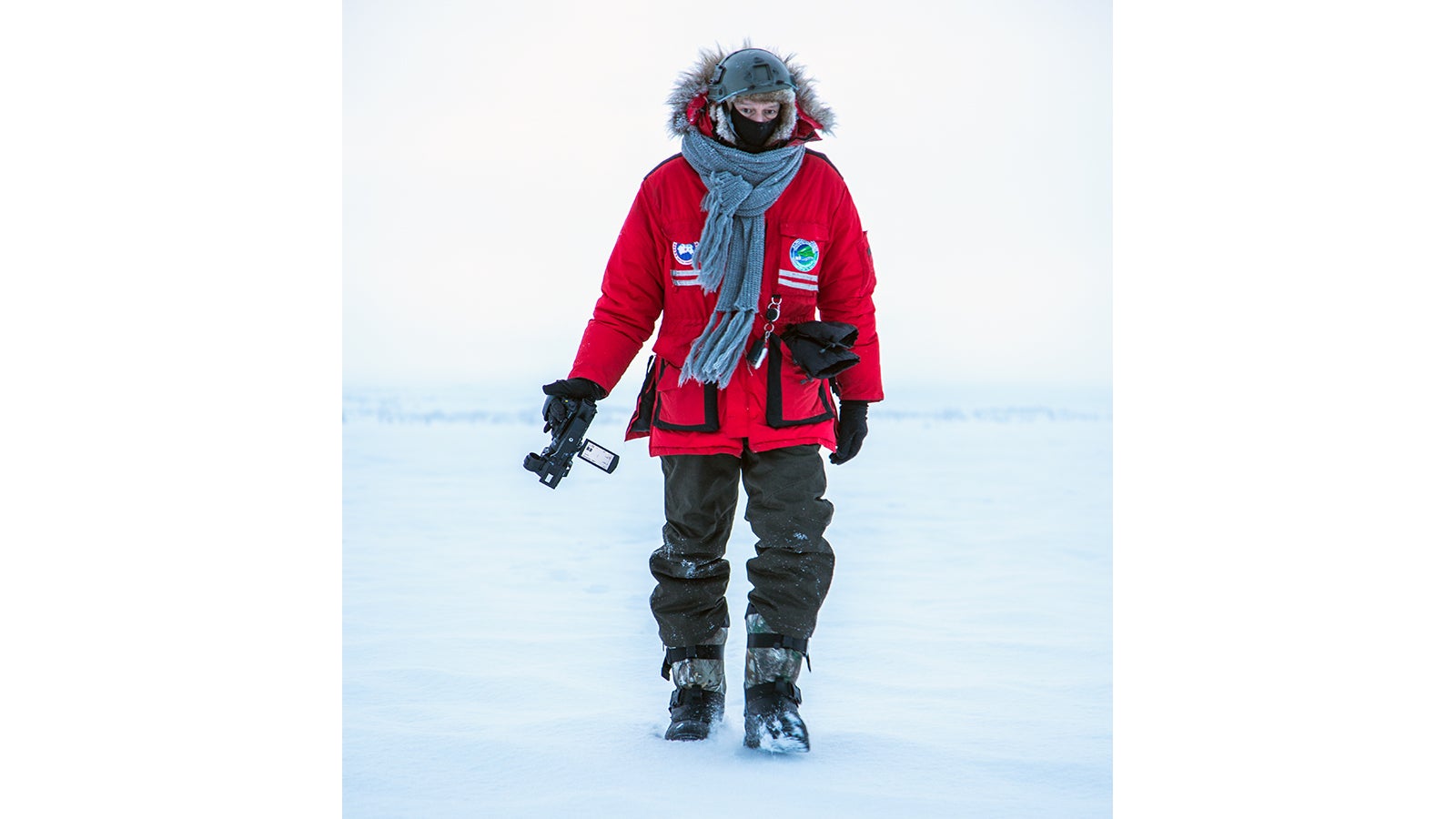
02-09-2021 - Gear, Technology
Shooting in Cold and Snowy Weather - Tips and Tricks
By: Alister Chapman
Alister Chapman is a regular contributor to SonyCine.com. Check out his website at xdcam-user.com.
I’ve shot in temperatures down to -40c in the arctic in winter, and while it might not be that cold where you are, working in cold weather presents many unique challenges to both you and your equipment. Let’s look at some of them.

Look after yourself!
There is nothing more miserable than being very cold on a shoot - except being very cold and very wet! So, make sure you have good cold weather clothing. I prefer to wear many layers of clothes rather than a single bulky layer. The reason for this is when working hard, perhaps setting up lights or other equipment, you can get hot. If you get too hot you will sweat and if your clothes become damp with sweat, when you stop working hard, perhaps as you go live on a news item, your damp clothes will not keep you warm and you will very quickly become cold. By wearing layers, you can strip off any unnecessary layers when working hard to stay cool and not overheat. Then add them back on again as you need when working less hard and moving less. Also, for cold weather you want breathable clothes that will let sweat and moisture escape. A waterproof coat can work against you by trapping moisture, and that will make you cold.
Operating a camera while wearing gloves can be a challenge. I find that the best way work in very cold weather is to wear a pair of thin fleece gloves under a pair of large and loose fitting mittens (gloves alone are next to useless below 5f,-15c). I can then slip my hands in and out of the mittens to operate the camera. Consider getting a pair of army surplus arctic mittens, they are very cheap on auction websites or at a surplus store and will often have an additional “trigger finger.” This extra finger makes it easier to press the record button and such.
If it’s very cold I keep a chemical hand warmer inside the mittens to warm my fingers back up after using the camera.
A lot of camera work involves a lot of standing around, and one of the hardest things to keep warm is your feet. Normal hiking boots will rarely keep your feet warm in very cold weather. So, invest in good thermal footwear. If standing on cold ground, ice or snow, standing on a couple of car mats, a blanket or a pile of sticks and twigs will lift your feet off the snow and ice and this can really make it much easier to keep your feet warm. In Norway we use reindeer skins to stand on.

What about the camera?
Overall, modern cameras do well in extreme cold. The most reliable cameras tend to be larger cameras. Larger cameras cool slower than small ones and larger cameras will hold onto internally generated heat better than small ones. Most Sony cameras are rated for use down to freezing but not below. However, my own personal experience has been that Sony cameras will continue to work well down to seriously low temperatures. I tend to give out before the camera!
Condensation
Condensation can be a deal breaker. Let’s say you’ve been working outside in temperatures below freezing for some time. When you take a very cold camera inside into a nice warm house/hotel/car/tent you will get condensation. If the camera is very cold this can then freeze on the body of camera including the glass of the lens. If there is condensation on the outside of the camera, there will almost certainly also be some condensation inside and this is not good for your camera.
To prevent or at least reduce the condensation you can place the cold-soaked camera in a large Ziploc or similar bag BEFORE taking it inside. Then allow the camera to warm up to the ambient temperature before removing it from the bag. Also be careful if you use waterproof flight cases as any moisture or condensation trapped in a waterproof case will have nowhere to go, so the camera will remain damp until the case is opened and everything is dried properly.

Slow LCDs
LCD displays will become slow and sluggish to respond in the cold. Your pictures may look blurry and smeary because of this. It doesn’t affect the recording, only what you see on the LCD. So, don’t be surprised if you see this. Once the LCD warms up again performance will return to normal.
Below -13f(-25c) you do risk the LCD panel freezing and cracking. LCD panels freeze at between -22f to -40f (-30c to -40c). If you are using a camera in very cold conditions and you notice the edges of the LCD screen going blue or dark you should start thinking about warming up that LCD panel as it may be close to freezing.
Battery Life
Li-Ion batteries are affected by the cold, but they are not nearly as bad as NiCads or NiMh batteries which are all but useless below freezing. Down to about 14f (-10c) there is only a small loss of battery capacity. Down to -4f (-20c) you will lose about 20%-40%. Below -13f (-25c) the capacity will fall away further. I find that Sony batteries tend to do much better in cold weather than many of the cheaper off-brand options.
Keep your spare batteries in a pocket inside your coat or jacket until you need them. After use let the battery warm up before you charge it. Charging a very cold battery will reduce the lifespan of the battery and it won’t fully charge. One top tip for shooting outside for extended periods is to get a cool box/ice chest. Get some chemical hand warmers and place them in the cool box with your batteries to keep them warm. If you don’t have hand warmers you can also use bottles filled with very hot water to keep the inside of the cool box/ice chest warm.

Watch your breath
If your lens has any snow or ice on it, don’t be tempted to breathe or blow on the lens to blow the ice off. Also try not to breathe on the lens when cleaning it as your warm breath will condense on the cold glass and freeze. Also try to avoid exhaling close to the viewfinder. A small soft paint brush is good for keeping your lens clean in very cold conditions as you can simply brush any snow or ice off. Otherwise, a large lens cloth.
Covers
Conventional rain covers become brittle below about -5f (15c) and can even shatter like glass below -4f (-20c). Special insulated cold weather covers, often called “polar bears,” can be used and these sometimes have pockets inside for chemical heat packs. These are well worth getting if you are going to be doing a lot of arctic shooting and will help keep the camera warm. As an alternative, wrap the camera in a scarf or cut the sleeves off an old sweater to make a tube you can slide over the camera.

Brittle Plastic
Plastics get brittle at low temperatures so be very gentle with anything made of plastic, especially things made from very hard, cheaper plastic. The plastic Sony typically use appears to be pretty tough even at low temps, but it’s still wise to go gentle. Wires and cables may also become rigid. Again, be gentle, bend them too much and the insulation may split.
Frozen Tripods
If a tripod is outside in very low temps for more than about 30 minutes, the grease in the head can become very thick or even freeze, so your fluid damping will become either very stiff or freeze up all together. Contact your tripod manufacturer to see what temperatures their greases can be used over. If you are not sure, you can always test your tripod head by placing it in a freezer for a couple of hours.





